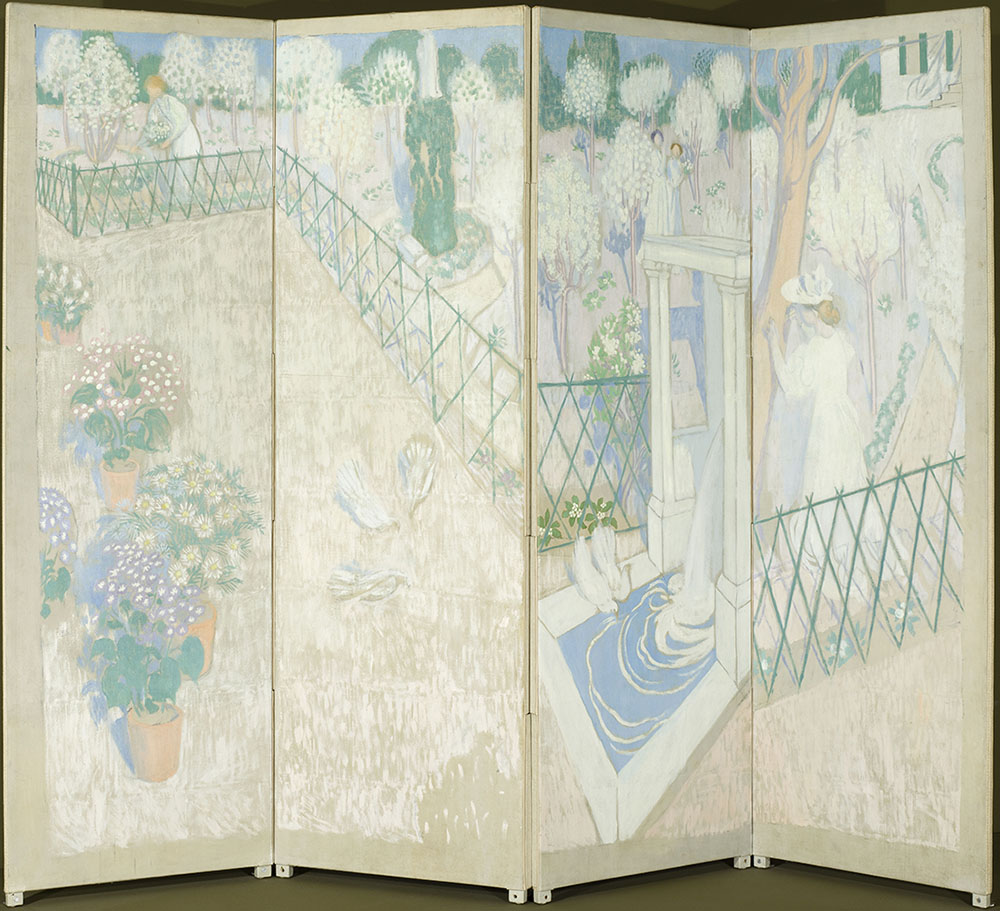ART-PRESENTATION: Japanese Connections-The Birth of Modern Décor
Starting in the 1860s, a partiality for anything coming from Japan appeared in France, followed by England, which was to continue for almost fifty years. Giving rise to the fashion of “Japonisme”, it followed on from the taste for “chinoiserie” that was in vogue in the courts of Europe at the end of the 18th century, and that had fascinated several generations of Romantic artists during the first half of the 19th century.
By Efi Michalarou
Photo: Louvre Abu Dhabi Archive
In the late 1800s, a group of French painters sought to move away from the illusionistic realm of art, creating instead symbolic and dreamlike paintings that evoke a world beyond that of reality. The paint-handling was soft and the scenes gauzy, trading precise draughtsmanship and strict perspective for life as if seen through memory. The artists formed a secret society and called themselves Les Nabis, they regarded themselves as initiates, and used a private vocabulary. They called a studio an ergasterium and ended their letters with the initials E.T.P.M.V. et M.P., meaning “En ta paume, mon verbe et ma pensée” (In your palm, my word and my thoughts). Their flat, perspectiveless paintings also bear more than a passing resemblance to Japanese prints, particularly the ukiyo-e works of Katsushika Hokusai, who was active in the early 1800s. This is no coincidence: the Nabis collected and studied Japanese prints, inspired not only by their two-dimensional style, but also by their elaboration of stories through separate panels and discontinuites, as is explored by a new exhibition at Louvre Abu Dhabi. In the exhibition “Japanese Connections: The Birth of Modern Décor” at Louvre Abu Dhabi are on display 19th and 20th Century paintings, prints and folding screens that highlight the artistic and cultural dialogue between Japan and France, and the important influence of the ukiyo-e aesthetics on modern decorative arts. The exhibition is divided into four sections that illustrate the influence of central ukiyo-e aesthetic principles, including representing the world in two-dimensions without using illusions of perspective; narrative compositions that show the passing of time, innovative use of folding panels for storytelling; and symbolic refinement exploring intellectual, dreamlike and spiritual ideas. The exhibition presents ten prints and three screens from Japan in dialogue with 24 paintings and three screens from France. The Japanese works include “South Wind, Clear Sky” from the series “Thirty-Six Views of Mount Fuji” (1831-32) and “Yôrô Waterfall in Mino Province” (1830-1834) by Katsushika Hokusai, Utagawa Hiroshige’s “Tôto Sumida tsutumi” (1858); and a six-leaved screen depicting a “Cherry Tree in Blossom on a Plain Gold Ground” by Hara Zaimei. Édouard Vuillard’s “Public Gardens” (1894), Pierre Bonnard’s folding screen “Nannies Promenade, Frieze of Carriages” (1897), Paul Sérusier’s “Women at the Spring” (1899) and “The Field of Corn and Buckwheat” (1900), a series of decorative panels by Odilon Redon and “Rolling Landscape” (1900), a four-leaf screen by Marguerite Sérusier. Using period photographs and films, projections in the exhibition also offer visitors a walk through Paris at the turn of the 20th Century, the city then considered the world’s capital of arts. The Manga Lab, a creative and experimental space for teenagers and young adults will offer a variety of entertaining experiences to explore contemporary Japanese culture.
Info: Curator: Isabelle Cahn, Louvre Abu Dhabi, Saadiyat Cultural District, Abu Dhabi, Duration: 6/9-24/11/18, Days & Hours: Tue-Wed & Sat-Sun 10:00-20:00, Thu-Fri 10:00-22:00, www.louvreabudhabi.ae












